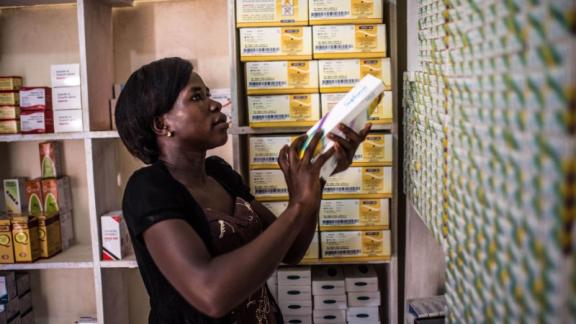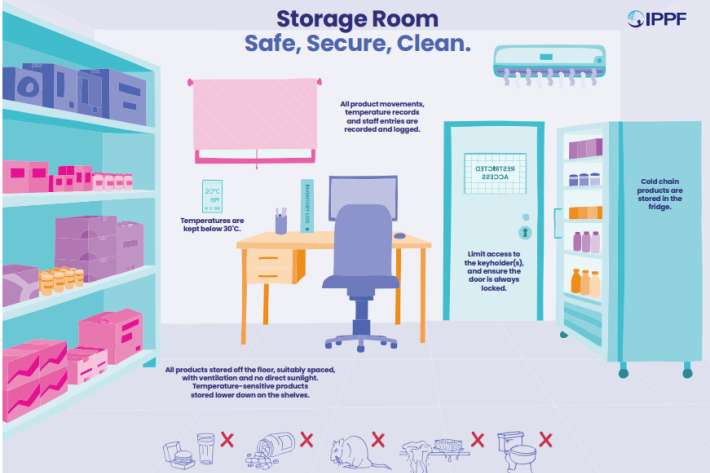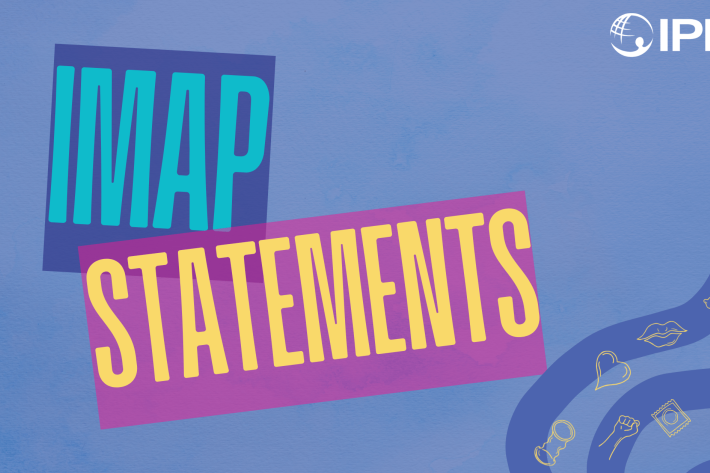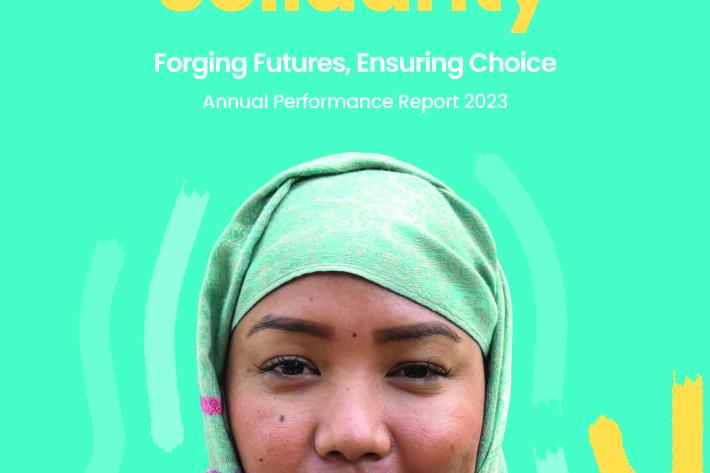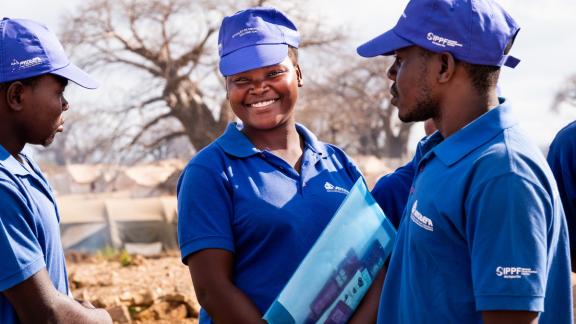Spotlight
A selection of resources from across the Federation
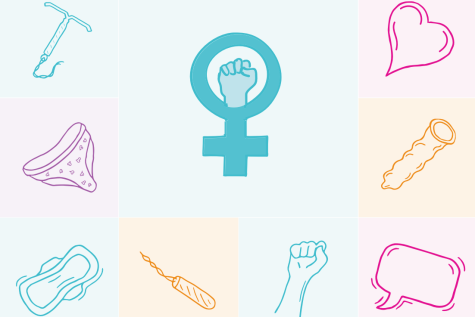
Technical Brief: Designing and Delivering Inclusive, Rights-Based Sexual and Reproductive Healthcare to Transgender and Gender Diverse People
This technical brief outlines key recommendations across several sexual and reproductive health service areas to promote access to inclusive care for transgender and gender diverse people.
Filter our resources by:
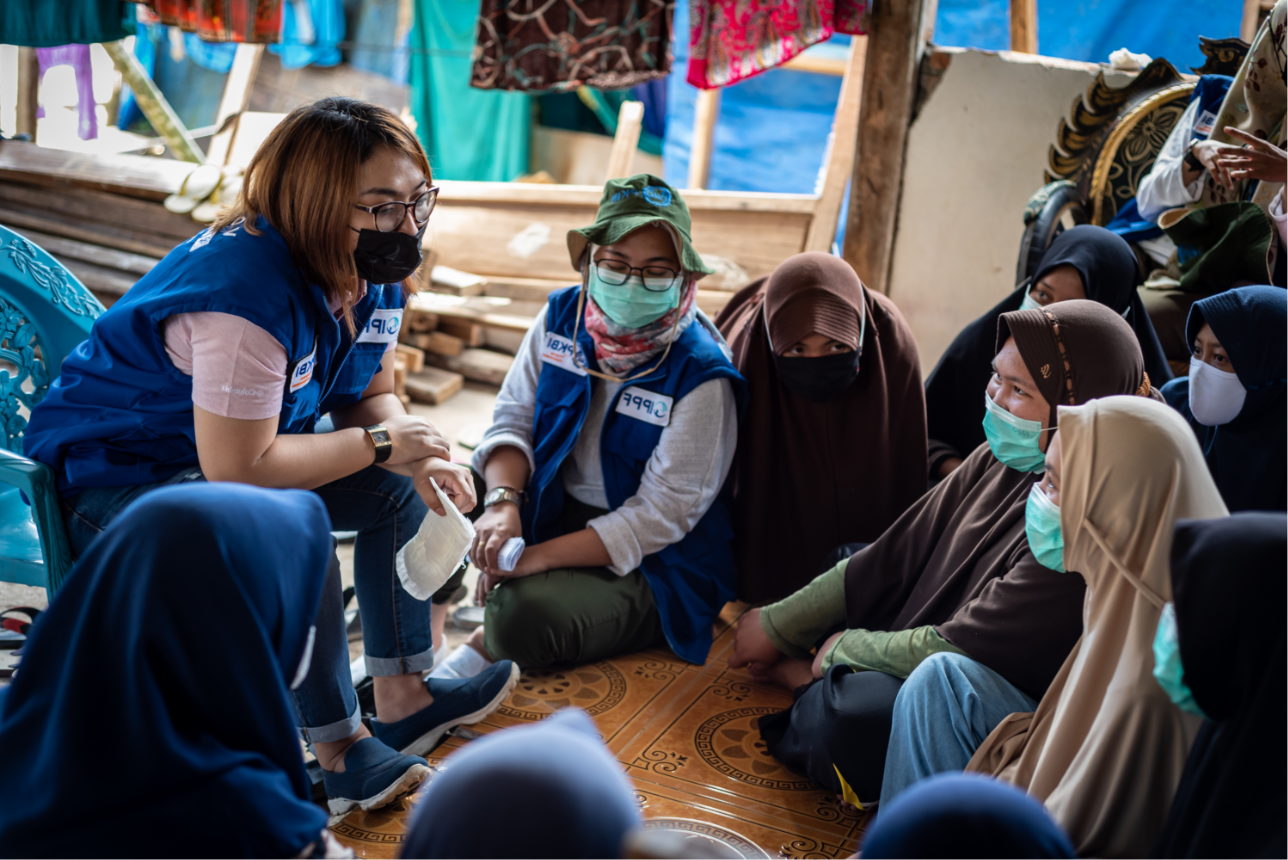

| 11 March 2022
IPPF Policy Handbook
IPPF's Policy Handbook in various languages – updated in November 2024.
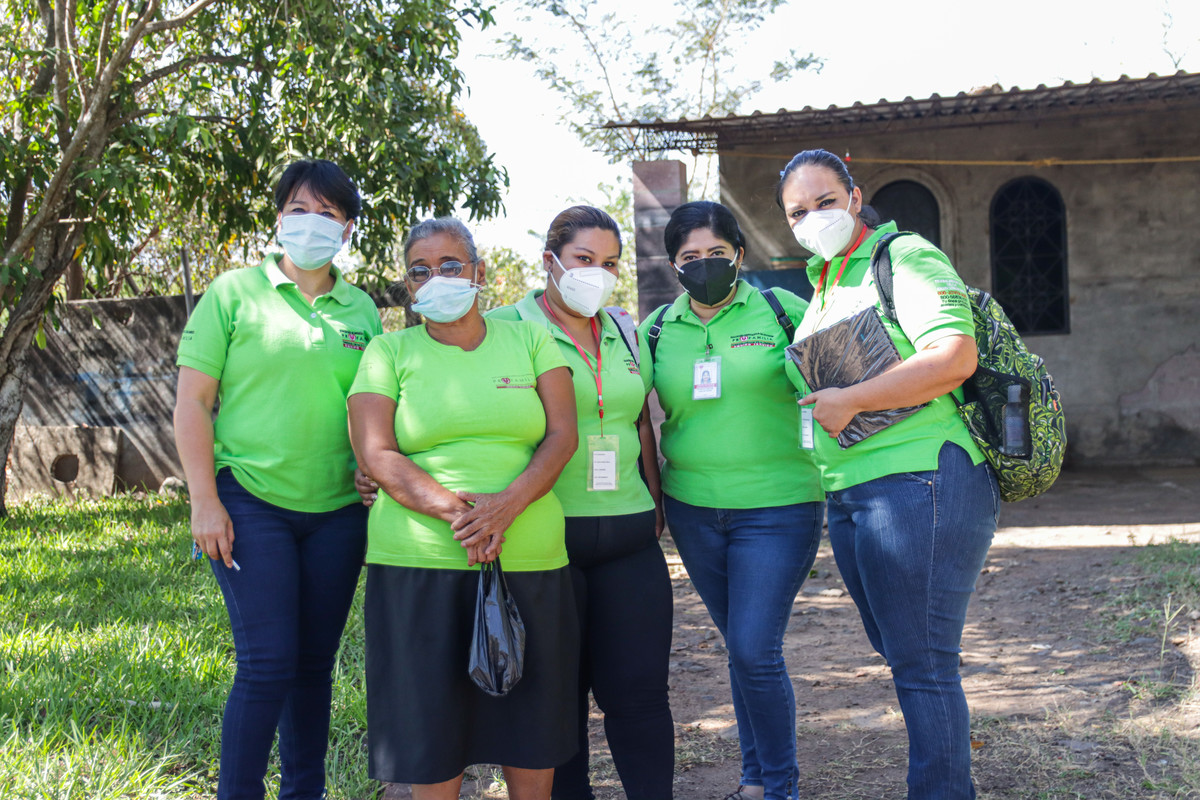
| 22 February 2022
Delivering no matter what: IPPF’s response to the COVID-19 pandemic
All around the world, the COVID-19 pandemic has, and continues to change the way that people live and the way that they experience sexual and reproductive health and rights. The COVID-19 pandemic has been transformative for IPPF as it has necessitated rapid, dramatic shifts in healthcare and programme delivery so that IPPF can continue meeting the needs of their clients and communities. In the first half of 2020, the Federation responded rapidly by convening a strong, multi-faceted global coordination mechanism – a COVID-19 Task Force – that serves to gather and disseminate intelligence about the pandemic; to lead strategic, joined up actions and learning; and to scale up innovations, all with the aim of supporting Member Associations (MAs) to deliver services in exceptionally difficult contexts. Working together, we have found solutions to provide ever more options and routes for rights-based support and care. Many of these will endure long past the pandemic. Read the report below for more.
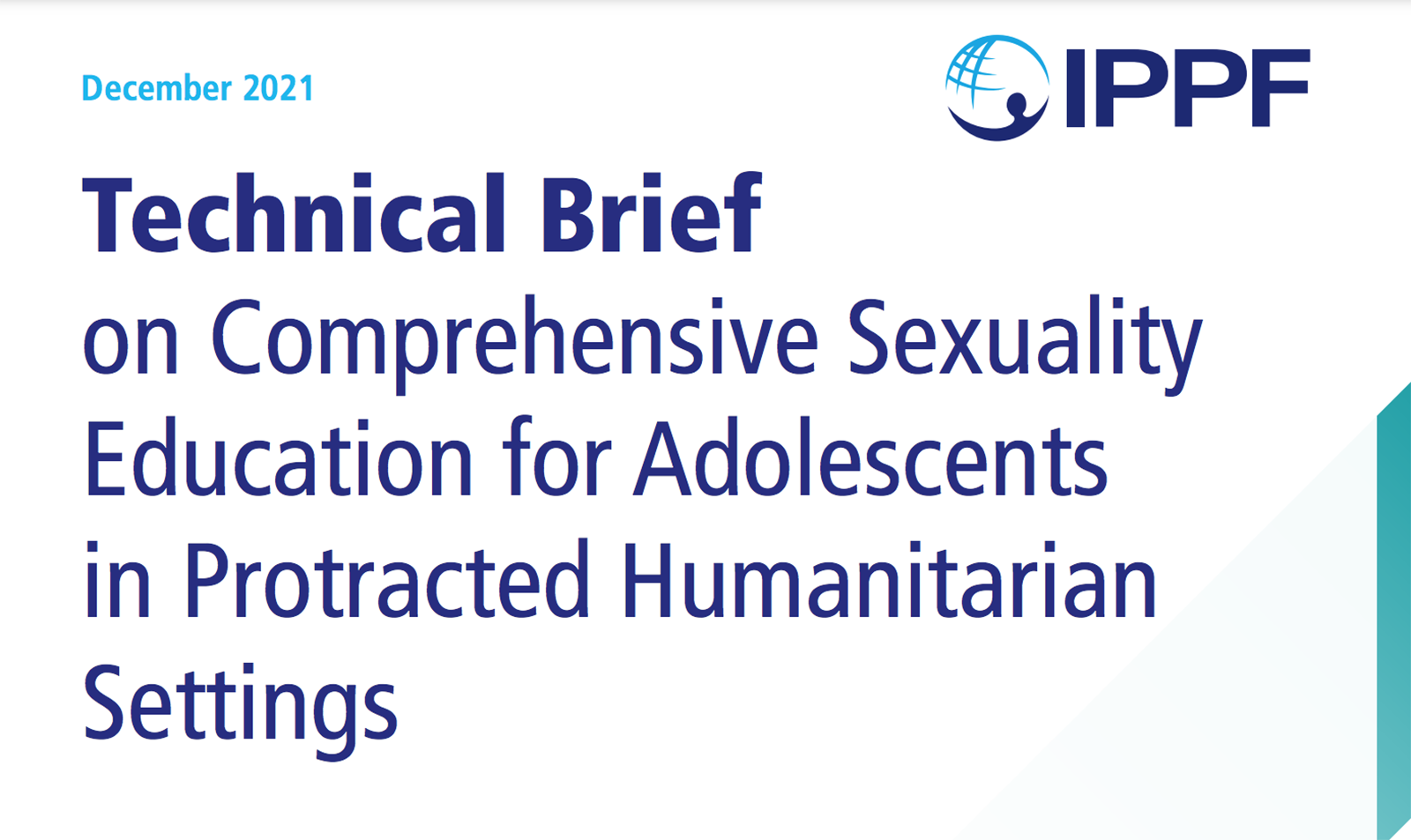
| 10 January 2022
Technical Brief on Comprehensive Sexuality Education for Adolescents in Protracted Humanitarian Settings
In line with the IPPF Humanitarian Strategy 2018–2022, we present promising practices to guide IPPF Member Associations and partners in the provision of CSE, specifically when operating in protracted humanitarian crisis environments and call the humanitarian community to action to recognize and adolescent sexual and reproductive health (ASRH) needs and rights in emergency response programming. This technical brief is available below in English, Arabic, French, and Spanish.
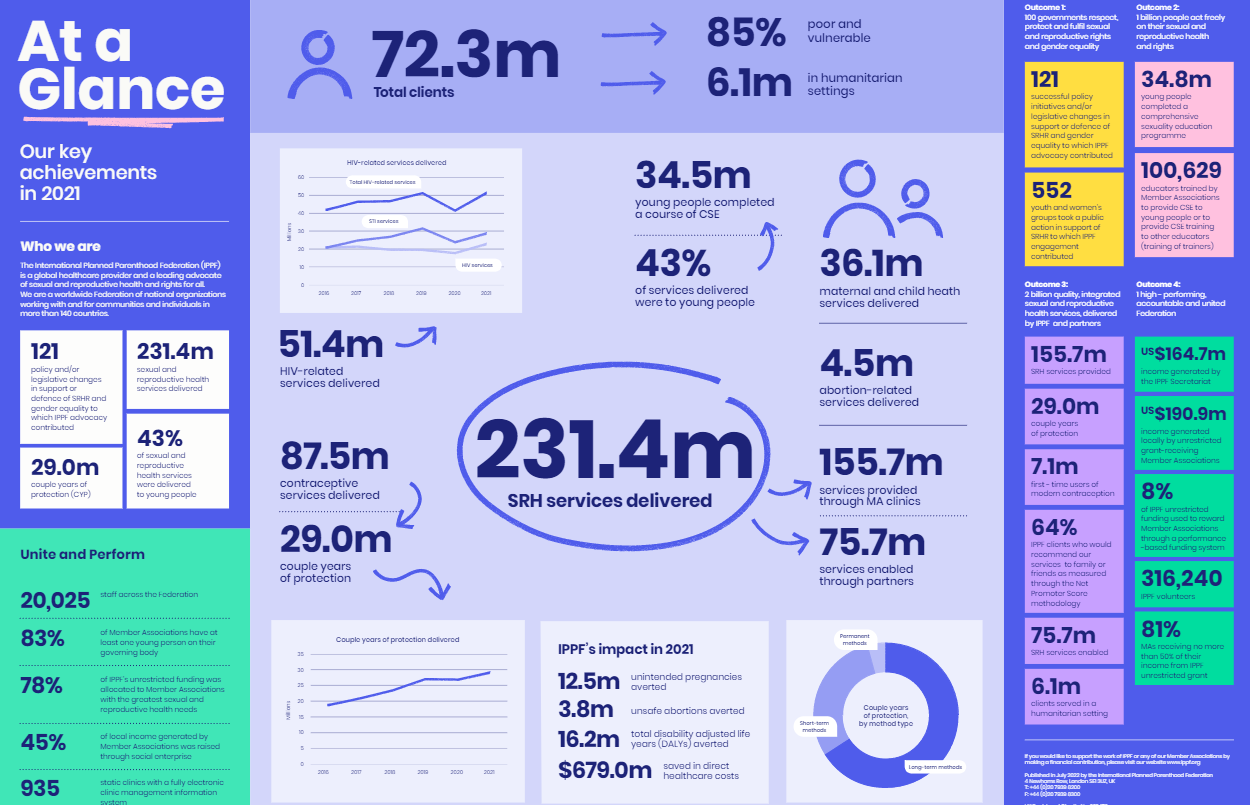
| 04 January 2022
At a Glance 2021
At a Glance 2021 is a summary of our key achievements from our 2021 Annual Performance Report. The document is available in Arabic, English, French, Spanish, Korean, Japanese and Chinese.
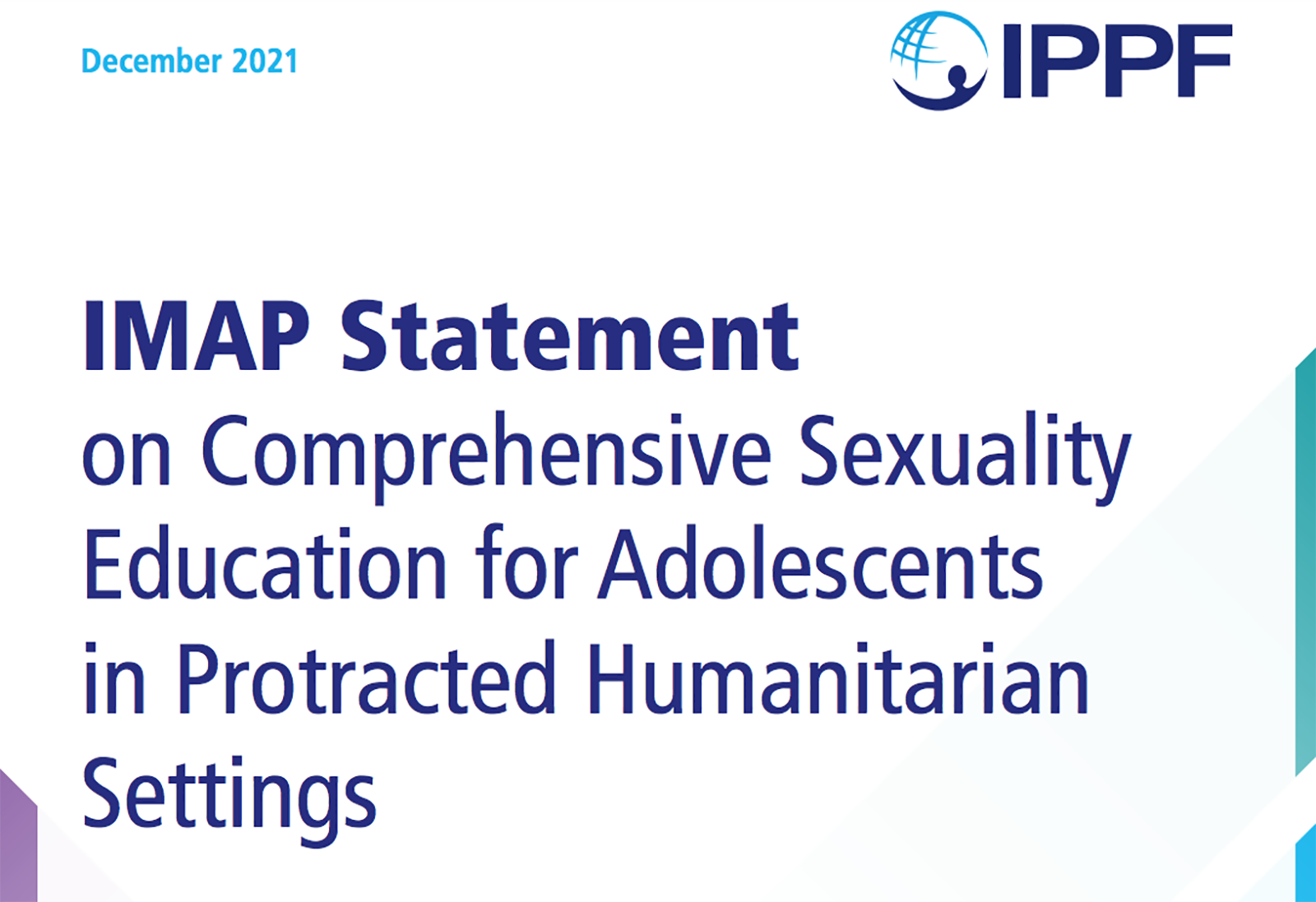
| 23 December 2021
IMAP Statement on Comprehensive Sexuality Education for Adolescents in Protracted Humanitarian Settings
IPPF envisions a world where “all people are free to make choices about their sexuality and well-being in a world without discrimination.” Therefore, Member Associations must strive to reach all adolescents with rights-based and contextually-relevant CSE to realize their sexual rights. In line with the IPPF Humanitarian Strategy 2018–2022, this statement brings together promising practices to guide IPPF Member Associations and partners in the provision of CSE in protracted humanitarian crisis environments. The statement also serves as a call to action for the humanitarian community to recognize and resource sexual and reproductive health (SRH) needs and rights of adolescents in emergency responses. Download the statement in English, French, Spanish, or Arabic.
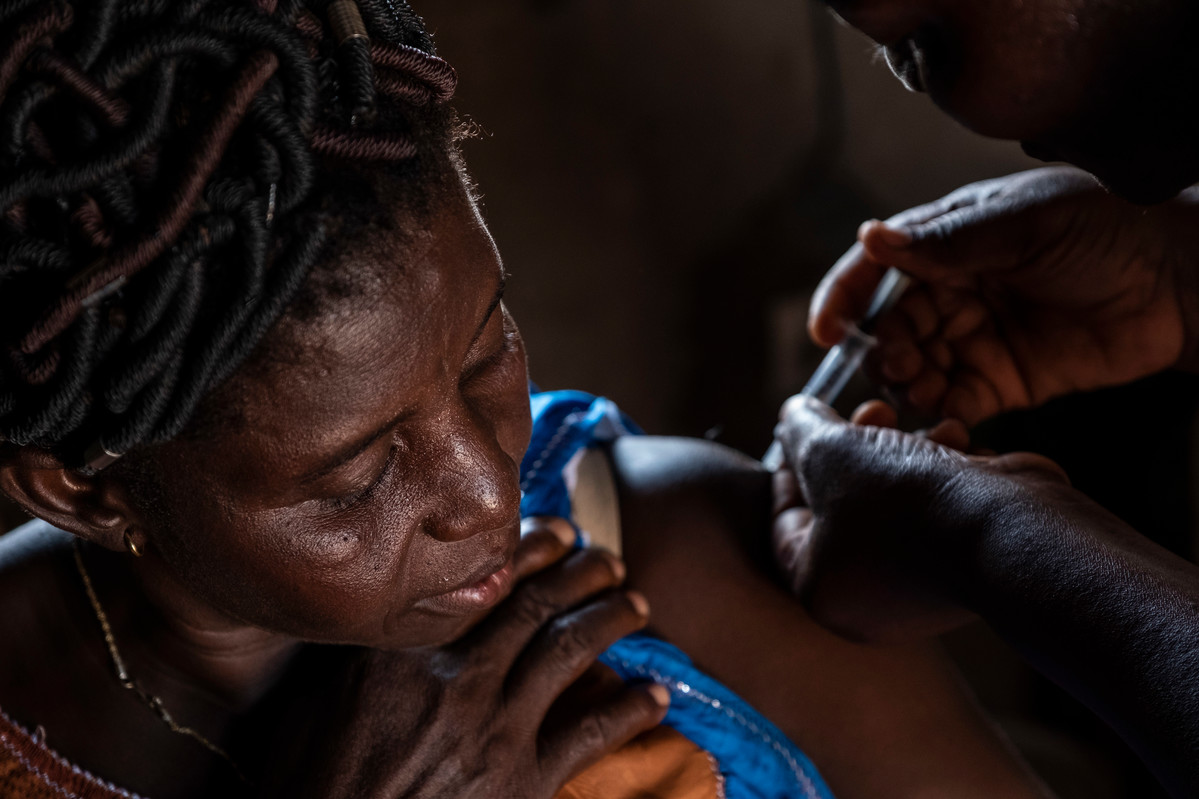
| 07 December 2021
IPPF position paper: Universal health coverage and sexual and reproductive health and rights
IPPF’s vision is of a world where all people are free to make choices about their sexuality and well‑being, without discrimination. This position paper articulates IPPF’s priorities in relation to Universal Health Coverage (UHC) and sexual and reproductive health and rights (SRHR) and aims to provide guidance for IPPF Member Associations (MAs) and the Federation at large. It was produced through a consultation process involving representatives from MAs and IPPF’s Secretariat through workshop discussions, key informant interviews, and document reviews. The paper is not meant to be a detailed, operational ‘how to’ tool. Instead, it intends to strengthen IPPF MAs’ and other organizations’ understanding of evidence‑based approaches to scaling up and/or institutionalizing access to sexual and reproductive health (SRH) services and care within a UHC framework. It also highlights key entry points to lead and support such approaches. This position paper is available below in English, French, and Spanish.
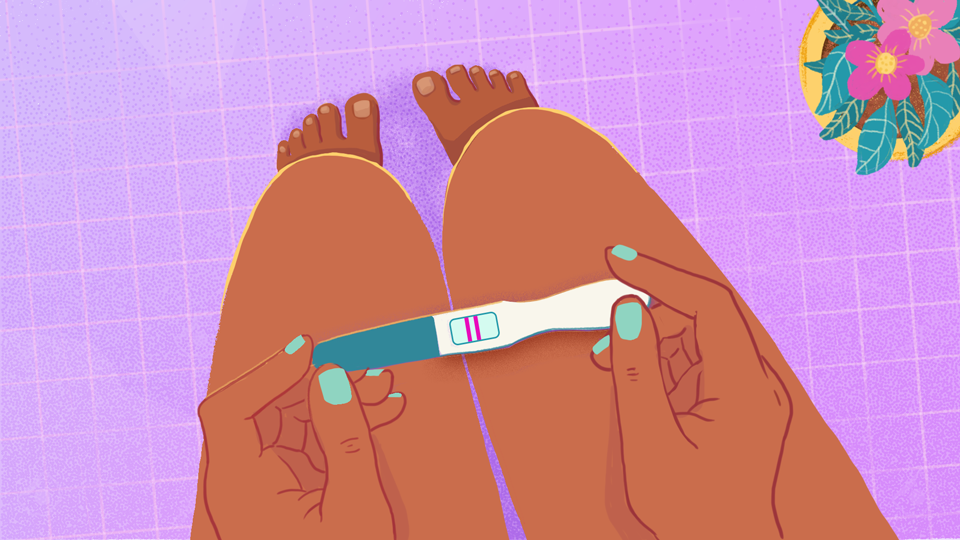
| 03 November 2021
A história do aborto de Ada
A história do aborto de AdaAcompanhe Ada para descobrir sua história. Como muitas pessoas, ela acabou de descobrir que está grávida, mas não tem condições de cuidar de outra criança. Ela decidiu fazer um aborto. Quais serão suas opções e o que ela escolherá? Reserve alguns minutos hoje para conhecer sua jornada e clique aqui para começar ...Seu nome é Ada. Você descobriu que está grávida, mas você não tem condições de cuidar de outra criança. Você decidiu fazer um aborto.O que você faz?Na internet, você descobre a https://safe2choose.org/pt/. No site, você lê sobre a atenção ao aborto disponível em seu país e sobre outras pessoas que também fizeram um aborto. Você também encontra um número de telefone gratuito de uma associação membra da IPPF em seu país que oferece informações e apoio para abortar.Você decide de:Você liga para sua amiga Maryam, que te conta que conhece muitas mulheres que fizeram um ou mais abortos. Ela diz que ela mesma fez dois. Ela dá conselhos sobre como encontrar informações online e também sobre a clínica onde ela fez seus abortos.Você decide de:Falar com uma conselheira safe2choose por chat ao vivo, ela te oferece aconselhamento confidencial e sem julgamento em seu idioma, gratuitamente. Você descobre que existem dois tipos de aborto disponíveis para você: • Um procedimento no hospital denominado aspiração manual intrauterina (AMIU), que inclui o uso de um dispositivo de sucção para remover a gravidez. Esta opção é normalmente oferecida até 13 semanas de gestação e leva cerca de 10 a 15 minutos. • Um aborto medicamentoso, que consiste em tomar comprimidos para induzir um aborto. Esta opção é normalmente oferecida até 12 a 13 semanas de gestação e pode ser feita na clínica ou em casa.Você decide de:Você fala com um serviço de saúde membro da IPPF, que oferece aconselhamento confidencial e sem julgamento sobre suas opções. Lá, te explicam os dois tipos de aborto disponíveis para você, que as conselheiras da safe2choose também haviam explicado - aborto medicamentoso com pílulas e aspiração manual a vácuo (AMIU).Você decide de:Elas explicam dois tipos de aborto disponíveis para você: • Um procedimento clínico conhecido como aspiração manual intrauterina (AMIU) que é realizado com um dispositivo de sucção que serve para remover a gravidez. Esta opção é comumente usada até 13 semanas de gestação e dura cerca de 10 a 15 minutos. • Um aborto medicamentoso que envolve a ingestão de comprimidos para provocar o aborto. Esta opção é normalmente oferecida até 12 ou 13 semanas de gestação e pode ser realizada na clínica ou em casa.Você decide de:On the internet, you discover safe2choose.org and read on their website about available abortion care in your country and about others who have also had an abortion. You speak to one of their counsellors by live chat, and she offers confidential and non-judgmental counselling in your language, free of charge.You learn that there are two types of abortion available to you:• An in-clinic procedure called a manual vacuum aspiration (MVA), which includes the use of a suction device to remove the pregnancy. This option is typically offered up to 13 weeks of gestation and takes about 10-15 minutes.• A medical abortion, which involves taking pills to induce an abortion. This option is typically offered up to 13 weeks in-clinic or up to 12 weeks at home.You decide to:Você fez a escolha que melhor se adapta às suas necessidades e situação, e foi apoiada durante todo o processo. A safe2choose.org e a IPPF oferecem informações, apoio e uma gama de opções para o atendimento ao aborto centrado na pessoa e baseado em direitos para todas as pessoas, independentemente de sua idade, religião, nacionalidade ou classe social. A equipe de conselheiras internacionais da safe2choose está aqui para apoiar durante todo o processo, a qualquer momento. A IPPF oferece atendimento ao aborto de qualidade e sem julgamento através de clínicas locais, atendimento baseado na comunidade, aconselhamento remoto e apoio ao aborto medicamentoso autogerido.Para obter mais informações, por faor visite os seguintes sites:• Informações de safe2choose sobre abortamento medicamentoso e aspiração manual a vácuo (AMIU)• Vídeos curtos da IPPF sobre aborto médico e aspiração manual a vácuo (AMIU)• Marcas de pílulas abortivas disponíveis em cada país - safe2choose information and MedAb.orgVocê conversa com uma parteira em uma clínica membra da IPPF que oferece aconselhamento confidencial e sem julgamentos sobre suas opções. Ela te explica dois tipos de aborto disponíveis para você: • Um procedimento clínico, chamado aspiração manual intrauterina (AMIU), que inclui o uso de dispositivo de sucção para remover a gravidez. Esta opção é normalmente oferecida até 13 semanas de gestação e leva cerca de 10 a 15 minutos. • Um aborto medicamentoso, que consiste em tomar comprimidos para induzir um aborto. Esta opção é normalmente oferecida até 12 a 13 semanas de gestação e pode ser feita na clínica ou em casa.Você decide de:You've made the choice that best suits your needs and situation, and you've been supported to do so throughout the process.Abortions are very common and one of the safest medical procedures when done under the right conditions and with the right information. Everyone regardless of their age, religion, nationality or social class deserves access to a safe abortion. safe2choose.org and IPPF offer information, support and a range of options for person-centred and rights-based abortion care.safe2choose's team of international counsellors are here to support you throughout the process at anytime.Você fala com uma pessoa da clínica membra da IPPF que te proporciona aconselhamento confidencial, sem julgamento, sobre suas opções. Ela te explica que há dois tipos de aborto disponíveis para você: • Um procedimento no hospital chamado aspiração manual intrauterina (AMIU) que envolve o uso de um dispositivo de sucção para remover a gravidez. Esta opção é normalmente oferecida até 13 semanas de gestação e leva de 10 a 15 minutos. • Um aborto medicamentoso que consiste na ingestão de pílulas para induzir o aborto. Esta opção, geralmente oferecida até 12 a 13 semanas de gestação, pode ser realizada na clínica ou em casa.Você decide de: Also available in English, French, and Spanish
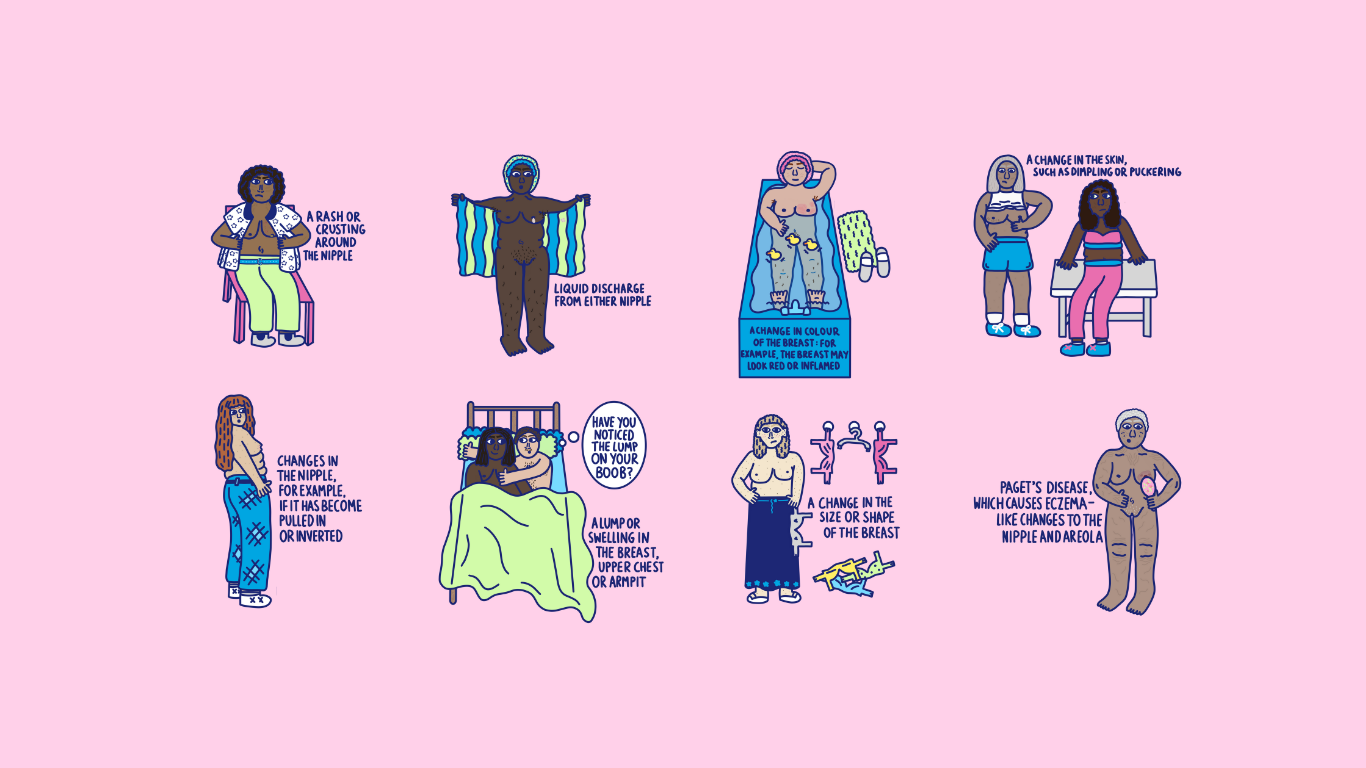
| 01 October 2021
Breast cancer: what you should know
Breast cancer is cancer that forms in the cells of the breasts. According to the World Health Organisation, there are more than 2.3 million cases of breast cancer every year, and with 1 in 8 women being diagnosed with it during their lifetime it is the world’s most prevalent cancer. However, breast cancer treatment can be highly effective, especially when it is identified early. Most people affected by breast cancer are women over the age of 50, but younger women can also develop breast cancer. In rare cases, men can also be diagnosed with it. Symptoms There are several symptoms of breast cancer, but what most people notice first is a lump or area of thickened breast tissue. While most breast lumps are not cancerous, it is advisable to always have them checked by a doctor. Other signs and symptoms include:

| 27 September 2021
My abortion journey
Ada's abortion journeyTake a journey with Ada to discover her story. Like many people, she has just found out that she is pregnant, but she cannot afford to raise another child. She has decided to have an abortion. What will her options be, and what will she choose? Take a couple of minutes today to share her journey – click "Start" to begin...Your name is Ada. You've found out you are pregnant, but you cannot afford to raise another child. You have decided to have an abortion.What do you do?On the internet, you discover safe2choose.org and read on their website about available abortion care in your country and about others who have also had an abortion. You also find a toll-free number for an IPPF member association in your country that offers abortion information and support.You decide to:You call your friend Maryam, who explains to you that she knows many women who have had one or more abortions. She tells you that she herself has had two. She gives you advice about how to find information online, and also about the clinic where she had her abortions. You decide to:You speak to a safe2choose counsellor by live chat, and she offers confidential and non-judgmental counselling in your language, free of charge.You learn that there are two types of abortion available to you:• An in-clinic procedure called a manual vacuum aspiration (MVA), which includes the use of a suction device to remove the pregnancy. This option is typically offered up to 13 weeks of gestation and takes about 10-15 minutes.• A medical abortion, which involves taking pills to induce an abortion. This option is typically offered up to 12 to 13 weeks' gestation and can be managed in clinic or at home.You decide to:You speak to an IPPF member service provider, who offers you confidential and non-judgmental counselling about your options. They explain the two types of abortion available to you, which the safe2choose counsellors had also explained – medical abortion with pills and manual vacuum aspiration (MVA).You decide to:They explain two types of abortion available to you:• An in-clinic procedure called a manual vacuum aspiration (MVA), which includes the use of a suction device to remove the pregnancy. This option is typically offered up to 13 weeks of gestation and takes about 10-15 minutes.• A medical abortion, which involves taking pills to induce an abortion. This option is typically offered up to 12 to 13 weeks' gestation and can be managed in clinic or at home.You decide to:On the internet, you discover safe2choose.org and read on their website about available abortion care in your country and about others who have also had an abortion. You speak to one of their counsellors by live chat, and she offers confidential and non-judgmental counselling in your language, free of charge.You learn that there are two types of abortion available to you:• An in-clinic procedure called a manual vacuum aspiration (MVA), which includes the use of a suction device to remove the pregnancy. This option is typically offered up to 13 weeks of gestation and takes about 10-15 minutes.• A medical abortion, which involves taking pills to induce an abortion. This option is typically offered up to 13 weeks in-clinic or up to 12 weeks at home.You decide to:You've made the choice that best suits your needs and situation, and you've been supported to do so throughout the process. safe2choose.org and IPPF offer information, support and a range of options for person-centred and rights-based abortion care for everyone, regardless of their age, religion, nationality or social class. safe2choose's team of international counselors are here for support throughout the process at anytime. IPPF offers quality and non-judgmental abortion care through static clinics, community-based care, remote counseling, and support for self-managed medical abortion.For further information, please visit the following:• safe2choose's information on medical abortion and manual vacuum aspiration (MVA)• IPPF's short videos on medical abortion and manual vacuum aspiration (MVA)• Brands of medical abortion available at country level – safe2choose information and MedAb.orgYou visit a midwife at an IPPF member clinic who offers you confidential and non-judgmental counselling about your options.They explain two types of abortion available to you:• An in-clinic procedure called a manual vacuum aspiration (MVA), which includes the use of a suction device to remove the pregnancy. This option is typically offered up to 13 weeks of gestation and takes about 10-15 minutes.• A medical abortion, which involves taking pills to induce an abortion. This option is typically offered up to 12 to 13 weeks' gestation and can be managed in clinic or at home.You decide to:You've made the choice that best suits your needs and situation, and you've been supported to do so throughout the process.Abortions are very common and one of the safest medical procedures when done under the right conditions and with the right information. Everyone regardless of their age, religion, nationality or social class deserves access to a safe abortion. safe2choose.org and IPPF offer information, support and a range of options for person-centred and rights-based abortion care.safe2choose's team of international counsellors are here to support you throughout the process at anytime.You speak to an IPPF member service provider, who offers you confidential and non-judgmental counselling about your options.They explain two types of abortion available to you:• An in-clinic procedure called a manual vacuum aspiration (MVA), which includes the use of a suction device to remove the pregnancy. This option is typically offered up to 13 weeks of gestation and takes about 10-15 minutes.• A medical abortion, which involves taking pills to induce an abortion. This option is typically offered up to 12 to 13 weeks' gestation and can be managed in clinic or at home.You decide to: Also available in French, Spanish, and Portuguese
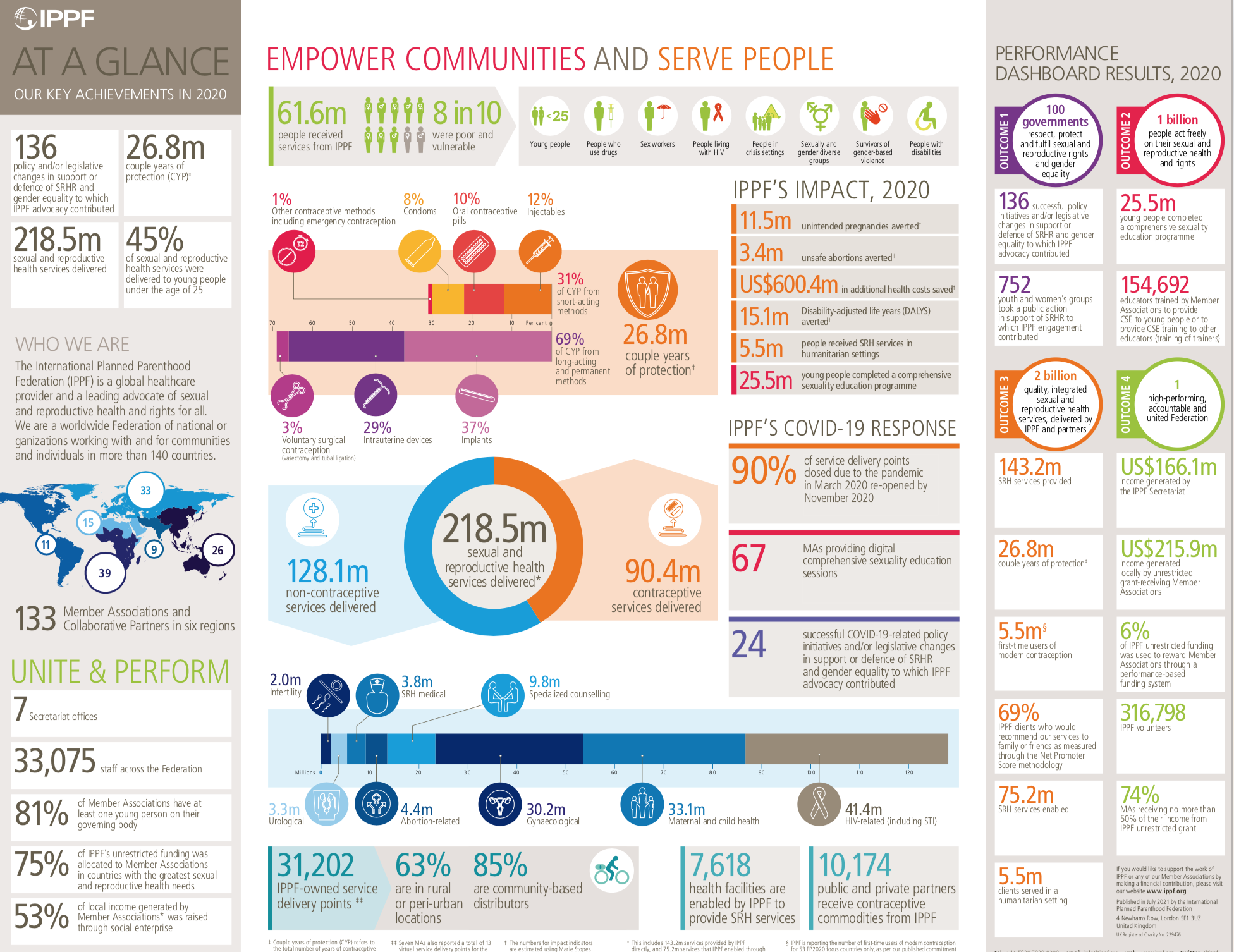
| 10 September 2021
At a Glance 2020
At a Glance 2020 is a summary of our key achievements from our 2020 Annual Performance Report. The document is available in Arabic, English, French, and Spanish.
Pagination
- First page
- Previous page
- …
- 3
- 4
- 5
- 6
- 7
- …
- Next page
- Last page







